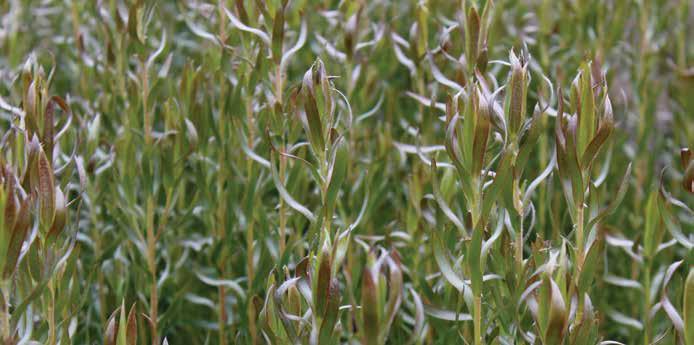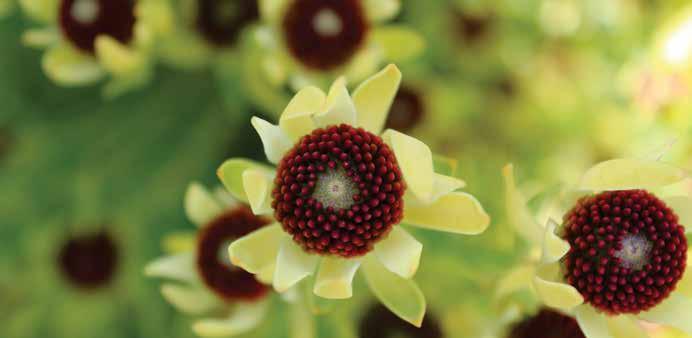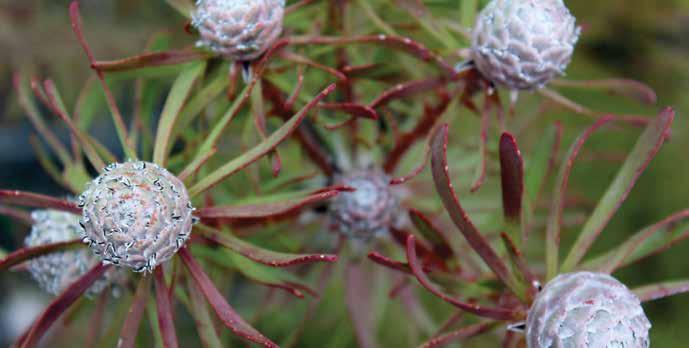
2 minute read
TIME TO LEARN ABOUT LEUCADENDRONS
Cover Image: Burgundy Sunset
Leucadendrons! What are they? How should you use them? How do you look after them? Consider this your crash course in the lovely Leucadendron by Linda Sijpkes from Ausflora Pacific.
The Leucadendron is a genus of plants from the Proteaceae family and are native to South Africa. Other members of the Proteaceae plant family include Grevillea, Protea, Banksia and many more. They are dioecious, meaning the male and female are on separate plants.
The Female varieties produce colourful bracts which are often referred to as flowers such as L.‘Safari Sunset’ and are popular in flower arrangements. They later develop a cone which contains the seed which is why Leucadendrons are sometimes referred to as conebush. Some of the female varieties have attractive cones which can be a great garden feature such as L. ‘Purple Haze’
The Male varieties produce flowers which have prominent styles which present pollen. Male varieties such as L.’Bella’s Buttons’ and ‘Sundance’ have showy flowers in Spring, so they are great for attracting bees to the garden, while also adding great colour. Leucadendrons are generally classed as a large shrub, however due to hybridisation and selection, there are many cultivars on the market. They range from a small shrub of 45cm to large shrubs up to 4m and they can be used in many garden situations from borders to hedges or a garden showpiece.
The foliage texture and colour of Leucadendron is incredibly varied. L.thymifolium has a fine soft grey foliage, L ‘Burgundy Sunset’ PBR has a very deep burgundy colour, L. floridum has a fine silver foliage with yellow bracts in Spring and L.gandogerii is a lush green. With over 80 species and even more cultivars there is a Leucadendron to suit almost every garden, so use your creativity.
Despite Leucadendrons being native to South Africa, they do very well planted with Australian native plants as they have similar water and nutrient requirements. They are drought tolerant and require little watering once established and as a bonus, most Leucadendrons can tolerate a frost up to -5°. It is recommended to plant Leucadendron in a sunny position, in a free draining soil with a ph below 7. If fertilising, always use a low phosphorus fertiliser such as an Australian native fertiliser.
Pruning is recommended before the next years growth appear, usually in Spring/ Summer to maintain the shape and size of the plant. Up to two thirds of the plant can be removed leaving at least 10cm of healthy growth behind.
And that’s it, your crash course is complete. There are books, websites, articles and local experts to tell you more if you really want to immerse yourself in everything about the lovely Leucadendron. Now get out there and start using them.

L.floridum

Bella's Buttons

Purple Haze










